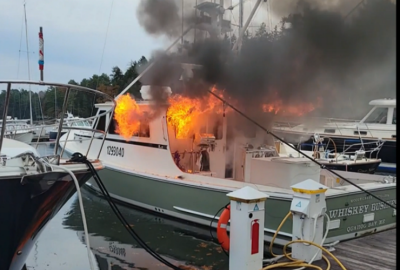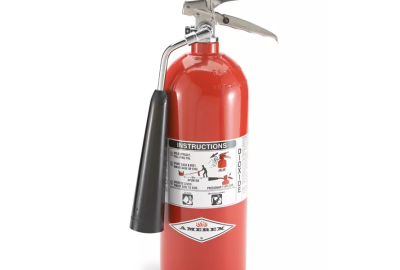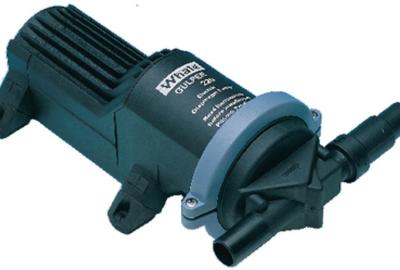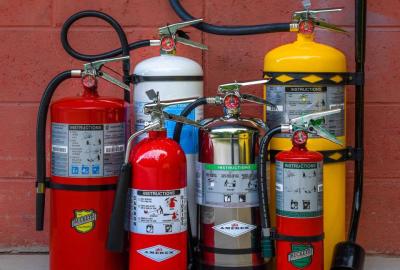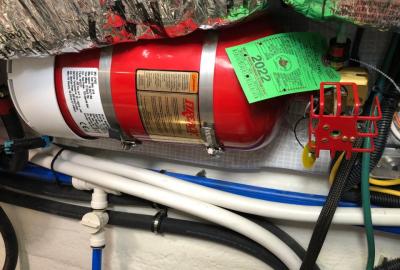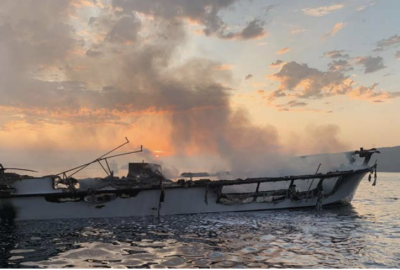A fire at a marina in Maine destroyed one boat and damaged another. Loss or significant damage to several other boats was averted due to the unusually fast response of the local volunteer fire department. There are several important observations and lessons learned from this incident.

The biggest issue with mid-sized batteries is charging. Think the battery on an E-bike, or even an electric outboard. These batteries are known sinners. The New York City Fire Department counts over 200 E-bike lithium fires per year, primarily when batteries are being charged.
- 29 November 2023
Each group was also shown the effectiveness of the inexpensive ABC or BC dry chemical extinguishers, again using a short well-aimed blast at the fire. However, during one of my demonstrations, I accidentally grabbed the halon extinguisher that I had used in a discussion of different fire-fighting agents. I pulled the pin, aimed the nozzle and let forth a brief blast of banned, terrible-for-the-environment, not-Sierra Club approved halon
- 30 September 2023
The story in MarineLog on this year’s Summer Solstice seemed both familiar and odd at the same time. A yacht valued at $1,500,000 burned to the waterline, and later sank, while undergoing some routine maintenance at a marina in Washington state. Closed circuit cameras showed that around 2:00 am, the fire started in the cockpit, and then grew slowly over an hour or so before someone noticed it and called the fire department. By then, the yacht was engulfed in flames. Unfortunately, no one was looking at the camera feed until it was too late. Luckily, there were no injuries associated with the fire.
- 30 July 2023
About 30 minutes later we were startled to see about 6 inches of water all along the low side from the galley forward along the settee berth and the floorboards were beginning to float. We removed them, turned on two electric pumps, and began bailing with two buckets, which allowed two of us to just keep even with the water, while two others shut all thru hulls and the two remaining crew continued racing.
- 29 November 2022
Remarkably, the list of required safety gear for a 35’ sail or power boat is remarkably short. Life jackets and throwable flotation, navigation lights, visual distress signals, a sound making device, and a couple of fire extinguishers is pretty much all you’re required to have
- 9 September 2022
My technician, Chris, found that the entire manual pull system on the FireBoy system in the engine room was inoperable with zip ties and a locking pin preventing the system from working. No matter how hard I might have tried to trigger the system, I would not have been able to. In addition, he found that the manual pull handle pulled right out of the bulkhead when you went to use it. After taking the refrigerator out so as to be able to reach the back of the pull, he was able to tighten the backing nut and restore it to functionality.
- 28 July 2022
With the recent indictment of the Captain o
- 26 April 2021
Lithium batteries are a fact of life in this day and age, and, like so many other things aboard, we must treat them with care. When I wrote the CCA article on Fire in the Boat – Prevention, I gently danced around the issue of fires in smaller Lithium-Ion and Lithium-Metal batteries. There I talked about the issues of charging them (don’t let that happen in a bunk or under a sail), and the high heat they generate when shorted.
- 28 February 2018
CCA Member John Jourdane sailed the 2008 Hobart Race on the Spencer 65, Ragtime. He witnessed a
- 21 June 2017

